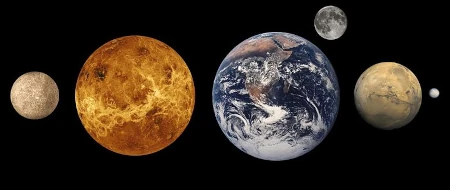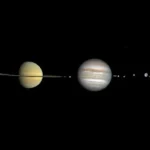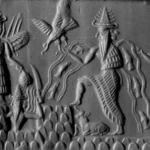Man set foot on Earth’s moon on July 21, 1969 – Neil Armstrong and Edwin Eugene “Buzz” Aldrin Jr. were the first humans to do so. Considering ancient Sumerian accounts, were Americans truly the first to arrive?
I will attempt to answer this question, once again using the seventh tablet of the “Lost Book of Enki.” In previous posts, I discussed the situation on Earth and Mars, which indicated that climate changes on these planets and the return of Nibiru to the vicinity of Mars caused catastrophes and irreversible changes. This prevented further exploration of Mars and its use as an Anunnaki way station.
Faced with these changes, the Anunnaki leaders decided to use the Moon as a new way station on the way from Nibiru to Earth.
“This is the account of the journey of Enki and Marduk to the Moon…
…Enki and Marduk set off in a rocket on their journey to the Moon.
They circled Earth’s companion three times and observed the deep wound inflicted by the dragon.
The face of the Moon was marked by many pits, traces of demonic blows.
Near the rolling hills, they left the ship and finally landed among them.
From this point, they could observe Earth and the vastness of the heavens.
They had to wear eagle helmets; the atmosphere was unbreathable.”
From the above part, we learn that Enki and his son Marduk arrived on the Moon from Earth in a spaceship. The air on the Moon was unbreathable, the surface barren and desolate, unsuitable for a way station.
However, they used their time on the Moon to make observations and measurements.
“They measured its (the Moon’s) motions around the Earth, calculated the passage of a month.
For six orbits of the Earth, for twelve orbits around the Sun, they measured the Earth’s year…
…then they observed the Sun’s quarter, the paths of Mummu, and explored Lahmu (Mars).”
“There are six celestial bodies in the Upper Waters, beyond the enclosure, the Hammered Bracelet (Asteroid Belt), are:
Anshar and Kishar, Anu and Nudimmud, Gaga and Nibiru; these are the remaining six,
All members are twelve, the Sun and its family has twelve members.”
The above part provides information about the number of celestial bodies in our Solar System, which the Anunnaki, and after them the Sumerians, included: the Sun, Mercury, Venus, Earth, Moon, Mars, Nibiru, Jupiter, Saturn, Uranus, Neptune, and Pluto.
It should be noted that some planets in our Solar System were discovered recently; for example, Uranus was discovered in 1781, Neptune in 1846, and Pluto in 1930. If we, humans discovered these planets within the last 250 years, how did the Sumerians know about them?
Another equally important question for today is: is it possible that the Anunnaki explored the Moon approximately 170,000 years ago?
If we admit that ancient accounts convey accomplished history, facts, not children’s fairy tales from that era, then we must consider that another, more advanced civilization landed on Earth thousands of years ago, accelerating the development of Homo Sapiens.





Why not??? we dont know what happen a few thousands years ago, any explanation is possible